Establishing a wildflower area
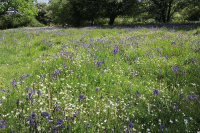
The ice age that occurred 10,000 years ago saw massive ice sheets scour much of Britain's flora clean. The south of the country was a tundra landscape; frozen solid in the winter, but enabling grasslands to flourish during brief summers. As the temperatures increased, species made their way back to the UK from Europe. During the Mesolithic period (10,000 to 5,000 BC), meadow-like grasslands and marshes existed as part of natural forests.
Man began to shape his environment from the start of the Neolithic period and into the Bronze age (5,000 to 2,500 years ago) by lopping trees for fodder before the introduction of metal tools, whilst non-woody vegetation was grazed. With the Iron Age came the introduction of metal tools, such as scythes, that were used to mow meadows, so that livestock would have fodder for the winter.
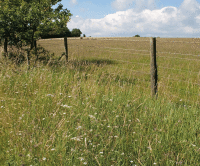
The 16th Century witnessed improvements in farming, such as the management of water-meadows, crop rotation and enclosure. During this period, Britain expanded its empire and plant collectors brought back species, some of which became important commercially, whilst others found a home, sometimes unwanted, within our countryside.
From 1860 to 1945, the invention of the mowing machine and the internal combustion engine were step changes that radically changed land management. Modern farming can be traced back to the creation of the Haber-Bosch process, the manufacture of ammonia from nitrogen and hydrogen, enabling the global population to increase from 1.6 billion in 1900 to today's 7 billion, along with the now familiar agricultural intensification that comes with the use of pesticides.
Farmers can be rightly proud of the increases in productivity, which has been achieved through ploughing, drainage, increased fertiliser and herbicide application, and earlier cutting for silage. Unfortunately, the costs for other species have been high. Wildflower meadows, once one of the most common habitats in lowland UK, have been almost eradicated, with over 95% being 'improved'.
The largest pollution source within our environment is agriculture, primarily through the leaching of nitrates and phosphates, but also pesticides such as metaldehyde or pathogens such as Cryptosporidium. It is easy to see farmers as the villains of the piece, but they are merely responding to a demand from the householder for cheap food.
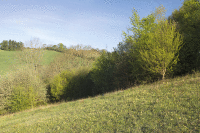
Meadows evolved over the last 2,500 years under the influence of man and were a key component of traditional farming, often more valued than other land. They were worked manually with iron and wooden tools and used only the energy and fertility generated locally. As a consequence, a wide variety of species co-existed simply because no single species could dominate.
Succession to scrub and then to woodland was prevented through the annual hay cut, favouring non-woody, herbaceous, species that could grow and set seed before this important event in the farming calendar, typically mid-summer.
Failure to effectively set seed naturally precluded a species from a meadow and the long-term consistent management of meadows (there is written evidence that some meadows have been managed in a consistent manner since being recorded in the Domesday book in 1086) led to the gradual increase of diversity, with up to forty species of flowering plant per metre growing in our most species-rich meadows: this is equivalent in species density to some of the most diverse areas of our planet, such as the rainforests. Wildflower areas are important because of the impact they have upon so many other species, including us.
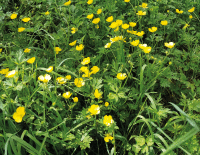
Livestock required fodder and traditional farming was powered by horses, therefore an important proportion of productive land was given over to meadows. Meadows were generally small (under 12 hectares) with about 80% of all settlements having meadows occupying between 4-10% of available farmland, depending on location.
Meadows were a small but vital part of the landscape connecting into woodlands and unimproved areas. Their distribution was nationwide and, as such, different types of meadows occurred in different areas: mainly because of the geology and soil type, but also down to hydrology (movement of water through the soil).
Rivers commonly flooded over the winter and entrained within the flood-water was nutrient-rich silt which would be deposited on, what were, mainly alluvial soils. This flooding was managed in the water-meadows and would also be used to warm the meadows in the spring and encourage growth.
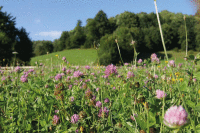
Northern hay meadows form a distinctive community centred on the Pennine Dales and Cumbria, with outliers in the Peak District, north Wales and Scotland. Here, the meadows endure a cooler climate with a late, shorter growing season. Almost every county has its own distinct meadow vegetation that is peculiar to the local climate and soil type, but one type of wild flower area, MG5, can be recognised throughout most of the UK.
Ecologists categorise meadows by the assemblage and proportion of the different types of plants through a standard methodology presented in a series of volumes by John Rodwell; the National Vegetation Classification (NVC). Each NVC community was given a code number and a name. The code indicates which broad habitat type it belongs to and provides a shorthand label. MG5, Crested Dog's-tail - Common Knapweed (Cynosurus cristatus - Centaurea nigra) Grassland is the type that occurs over most of the neutral grassland that grows on deep, brown soils of a loamy or clay texture, across a wide range of pH, calcium content and soil moisture regime. Most general wildflower seed mixtures are loosely based on the plants that occur within this community because these species are known to have a wide ecological tolerance.
This forms the background against which we consider the most appropriate species mix to select when trying to establish a wildflower area. Significant factors to consider are:
- Soil type - this has an important effect on the availability and flow of moisture through the site as well as the response of the soil to the weather
- pH - determines the availability of particular nutrients. Plants have a preference for acid, neutral or alkali soil types
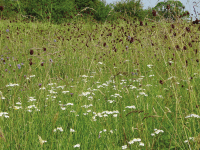
- Hydrology - this is affected by the soil type, but specifically concerns the movement of water through the soil, i.e. where ground water comes to the surface in a flush or spring, or the water table fluctuates considerably through the season
- Nutrient availability - there is no area within Britain that has not been affected by man. The amount and type of nutrients available within the soil will have the most significant effect on establishing a wildflower area
- Location - the east of the country is strongly influenced by the continental climate and is, therefore, colder and drier, whereas the west is driven by the Atlantic which is warmer and wetter. Temperatures in the north of Britain are lower over the course of a year than in the south
- Altitude - for every 1,000 metres of altitude, the average temperature falls by about 6.4°C
- Aspect - this determines how much incidental sunlight a site is exposed to. South facing exposures can dry out very quickly and experience higher temperatures, whereas north facing slopes can lie cold and wet
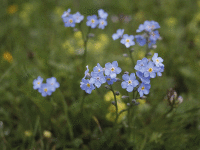
- Previous management - sites with a history of human intervention will take longer to develop a stable flora than sites that have been left untouched
Close attention to the flora growing locally is a useful shortcut to knowing what type of plants will thrive naturally. Useful guide books that can be used to help identify the various wildflowers are:
The Wildflower Key by Francis Rose, updated by Clare O'Reilly - a pictorial guide with written dichotomous keys to help with identification.
The Vegetative Key to the British Flora by John Poland and Eric Clement - enabling one to identify plants that don't have flowers.
Grasses by C.E. Hubbard - still the best book for those who are serious about identifying grasses. Equipped with a key to both flowering and vegetative specimens and excellent line drawings.
The Field Studies Council provides a variety of identification courses for beginners and experts alike: http://www.field-studies-council.org/individuals-and-families/natural-history/plants/flowering-plants.aspx
Once you have a handle on what is naturally growing locally, you can use the table shown here to determine what other vegetation would suit your site.
The table (view PDF here) shows the 'centre of gravity' of the occurrence in relation to soil moisture and pH, not the amplitude of the spread around that centre. The species marked in bold are the most frequent ones to occur in a range of NVC types. Soil combinations, where grass was commonly treated as meadow, are shaded.

Stability or balance within a community is obtained by having as many of the available ecological niches filled by an organism as possible. An ecological niche of an organism is its natural history; all the interactions and inter-relationships of the species with other organisms and the environment. In well balanced systems, there is a large diversity of different organisms with specialist niches, ensuring that no one single species can prosper to the detriment of the others. However, most human interactions tend to result in that balance being knocked off kilter. Identifying what factor is the cause, or the potential cause when establishing a new wildflower area, and mitigating its effect, is the key to success.
Take into account that one should provide as weed-free a seedbed as possible, and the tilth should be sufficiently fine to ensure good contact with the seed; that the soil temperature is above 10°C (though some plants such as Yellow Rattle require a period of vernalisation to break their dormancy) to ensure that you obtain good germination and that adequate moisture is available to ensure that the new plants get off to a good start.
Always use a reputable seed supplier and be prepared to pay for a good product - this is definitely an area where, if you fall short on quality, you'll regret it in the long term. One needs to consider the limiting factors to obtaining the balanced wildflower meadow one seeks. These, as indicated previously, are soil type, pH, hydrology, nutrient availability, location, altitude, aspect and previous management.
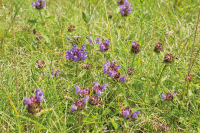
Nutrient availability and previous management are closely related factors because a lot of human activity alters the nutrient status. As a general rule, wildflowers prefer a low nutrient status. This enables species with specialist niches to become established more easily and prevents plants such as Broad-leaved Dock, Creeping Thistle and Common Nettle that have adaptations to enable them to benefit disproportionately from higher nutrient situations.
Unfortunately, most people conceive that a wildflower area is an unmanaged area. As you can see from my explanation of the history of the evolution of the wildflower meadow, this is very definitely not the case. Classically, a wildflower meadow would have followed the following pattern:
- Hay is cut in mid-summer
- The stubble will green up within a couple of days and traditionally livestock, in low numbers, would have grazed it until they started poaching the ground, at which point they would have been housed. Depending on the circumstance, this can be before or after Christmas.
- Livestock are excluded from the spring onwards whilst the next crop grows
This approach does not allow nutrients to accrue and ensures that they are in short supply, enabling more diverse specialist species that are not strong competitors to become established.
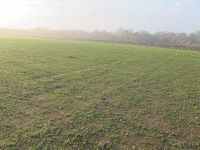
In many situations, it is not possible to graze the areas, although more managers are using livestock to graze the aftermath later in the year. This is good practice because it can also open up the sward and enable opportunistic plants to become established. If this isn't possible then areas need to be mown and the arisings removed.
Scarifying in the autumn and, on some occasions, in the spring can also thin the sward down and encourage a greater diversity of flowering plants; again all arisings need to be removed.
In some circumstances, it may be necessary to remove the nutrient-rich topsoil and expose the nutrient-poor subsoil. Establishment will be very slow, but it will prevent competitive plants from becoming a serious problem. This can be done by scraping the surface clear with a digger or through deep-ploughing, which inverts the soil, to a maximum depth of 90cm.
Expert advice should be sought for large areas to ensure that the best cultural practice is undertaken and the most appropriate species mix is selected or, in some circumstances, created.
John Handley is Technical Manager for Maxwell Amenity. BASIS No. AR/E/6794/ICMAT

